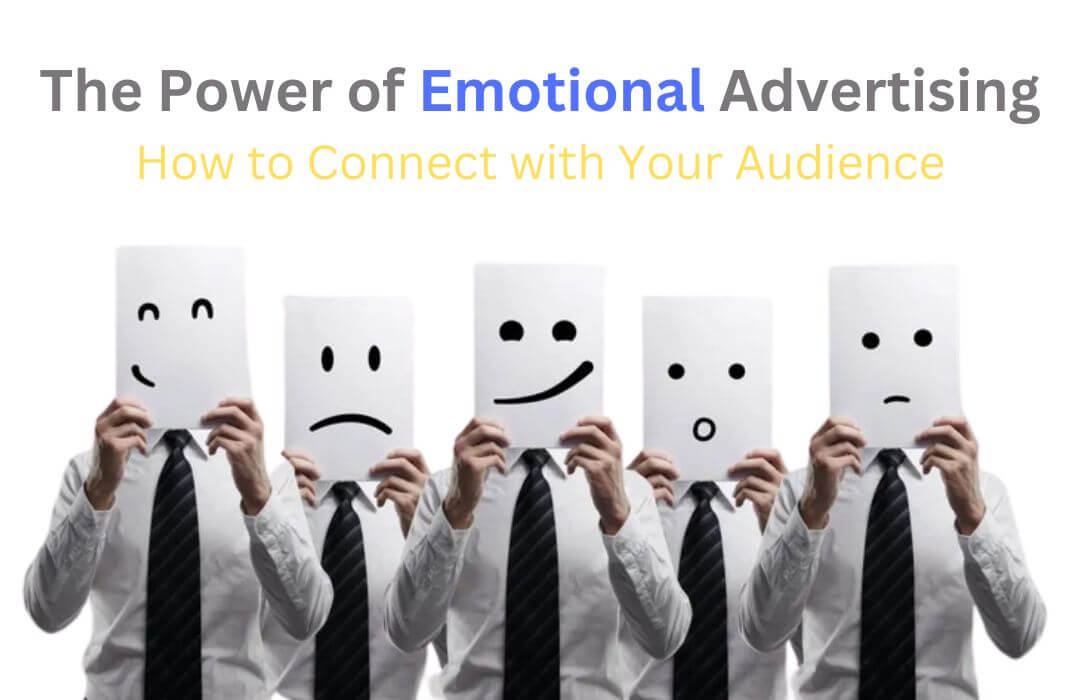Connecting with the audience through advertising is of paramount importance for businesses and marketers. It plays a crucial role in building brand awareness, establishing meaningful relationships, and ultimately driving business growth, differentiating from competitors, influencing purchase decisions and facilitating customer engagement. By understanding their target audience, crafting compelling messages, and utilizing appropriate channels, businesses can create impactful advertising campaigns that resonate with consumers and drive business success.
What is emotional advertising?
Emotional advertising refers to a marketing approach that aims to evoke strong emotional responses from the audience. It focuses on appealing to customers’ emotions, feelings, and values rather than solely emphasizing product features or benefits. Emo advertising taps into human emotions such as joy, sadness, fear, anger, or nostalgia to establish a connection with the audience and create a memorable brand experience. The goal is to forge a deeper emotional bond with consumers, influencing their attitudes, beliefs, and purchase decisions.
Emo advertising often utilizes storytelling techniques, compelling narratives, and powerful visuals to evoke emotional reactions. It may use themes such as love, friendship, family, social causes, or personal growth to resonate with the target audience. By creating an emotional connection, emo advertising seeks to leave a lasting impression and build brand loyalty.
Benefits
1. Emotional advertising offers several benefits for brands looking to connect with their audience on a deeper level and drive meaningful engagement. Here are some key benefits of emotional advertising:
2. Captures attention: Emotional advertisements have a greater chance of capturing the attention of the audience amidst the noise and clutter of traditional advertising. By appealing to emotions, these ads create a strong initial impact and stand out from more rational or product-focused messages.
3. Builds brand recognition and recall: Emotional advertising creates memorable experiences for viewers. When an advertisement elicits an emotional response, it tends to stick in the audience’s minds for longer periods. This increased recall and recognition can have a positive impact on brand awareness and brand recall when customers are making purchasing decisions.
4. Establishes emotional connection and brand affinity: Emotional advertising allows brands to connect with their audience on a deeper, more personal level. By tapping into the audience’s emotions, values, and aspirations, brands can forge an emotional bond that goes beyond transactional relationships. This emotional connection increases brand affinity and fosters long-term loyalty.
5. Differentiates from competitors: Emotional advertising can set a brand apart from its competitors. By leveraging emotional appeals and creating meaningful brand experiences, brands can establish a unique position in the market. Emotional differentiation can be particularly effective in industries where functional differences between products or services are minimal.
6. Influences consumer behaviour: Emotions play a significant role in driving consumer behaviour. Emotional advertising has the power to influence attitudes, perceptions, and purchase decisions. By evoking the right emotions, brands can create a desire for their products or services, enhance brand preference, and ultimately drive conversions and sales.
7. Enhances storytelling and brand narrative: Emotional advertising provides an excellent platform for storytelling. Brands can use narratives that resonate with their target audience, bringing their brand stories to life and creating compelling narratives that engage and inspire. Through emotional advertising, brands can share their values, mission, and purpose, strengthening their brand narrative and connecting with customers on a deeper level.
8. Increases shareability and word-of-mouth: Emotional advertisements are more likely to be shared and discussed among consumers. When an advertisement touches people emotionally, they are more inclined to share it with their friends, family, or social media networks. This organic sharing can significantly amplify the reach and impact of emotional advertising campaigns.
Examples-
1. Cadbury Dairy Milk – “Kuch Achha Ho Jaaye, Kuch Meetha Ho Jaaye” (2021): This campaign centres around the theme of spreading joy and kindness. It showcases various situations where individuals choose to do something good for others, creating a ripple effect of happiness. The emotional storytelling emphasizes the brand’s tagline, “Kuch Meetha Ho Jaaye” (Let’s have something sweet), promoting the idea of celebrating moments of happiness with Cadbury Dairy Milk.
2. Amazon India – “Delivering Smiles” (2022): This campaign highlights the impact of Amazon’s services in bringing joy to people’s lives. It showcases heartwarming stories of individuals receiving unexpected packages that fulfil their desires and dreams. The emotional ads convey the joy of gifting and receiving, emphasizing the convenience and happiness brought about by Amazon’s delivery services.
Conclusion-
Emotional advertising plays a significant role in the Indian context, enabling brands to establish deep connections with their audience. By tapping into emotions, these campaigns create memorable experiences, foster brand loyalty, and influence consumer behaviour. Emotional advertising in India often revolves around themes like family, relationships, unity, social causes, and empowerment. It aims to evoke strong emotional responses and convey messages of joy, kindness, social responsibility, and empowerment. These campaigns resonate with viewers and leave a lasting impact, ultimately driving meaningful engagement and brand success. Emotional advertising has become an integral part of the Indian marketing landscape, allowing brands to connect with their audience on a deeper level and create meaningful brand experiences that resonate with diverse Indian consumers.
